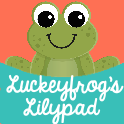Post # 3 is hosted by this fabulous blog- so hop over there and check out her post.
Then head over to Dilly Dabbles and read more.
What is the Role of Talk?
I loved reading the difference between monologic and dialogic talk. I agree that so often we go into a conversation about a book with a goal in mind, a point to make, text structures or literary elements we want to teach, and often our end result is that the students agree with us. And, then afterwards, we say how amazing the conversation was, but we don't realize that the students were just "passive recipients of knowledge and not the co-constructors of meaning." I think it's a hard paradigm shift for us to let go of that power and control and really make the conversation give and take where "speaker becomes listener and listener becomes speaker." And, part of it is, that we do have an agenda- we have standards and skills we need to teach with these books, and if we let go of that notion, we might not have the students ready for the high-stakes test where they need to show mastery of those standards.
The authors say that it is inauthentic to ask questions for which we already know the answers, but this type of questioning is prevalent in classrooms. Wow- that is a powerful statement and one that I really need to reflect on!
I liked the tips for improving student to student discourse. I particularly liked #5 about giving specific feedback about comments. I also liked #6 about encouraging students to elaborate. I use "Tell me more" all the time with my kindergarteners because they think that when they offer a comment, they are done. And, so often, their comments are the kind that need the most elaboration. I think my favorite is #8 that talks about giving students the vocabulary of the discipline- giving them the language to talk about the book and modeling the language we want them to use.
What is Close Reading?
I don't know about your district, but the phrase "close reading" has become such a buzzword for us this year. I've sat through hours of professional development training and I still don't have a clear idea of what is expected of us when we do close reading. Our trainers (just teacher colleagues) have been wonderful, but I get the idea that they don't know much more than we do about how/when to do close reading. I've purchased Close Reading packets/units from TpT, and they've been ok, but spending five days on ONE picture book is a bit much for my kindergarteners (and for me too!) So, I was very eager to read this chapter and get more insight into close reading.
After reading this chapter, I have to say that I feel much better about close reading. I feel like it is nothing really that new and that there is no prescribed way of doing it (which is not really the training I received from my district).
I think that this statement sums it all up:
"Close reading should suggest close attention to the text; close attention to the relevant experience, thought and memory of the reader; close attention to the responses and interpretations of other readers; and close attention to the interaction among those elements."
If we can do all of those thing, no matter the format we use, then we are doing close reading. So, it doesn't need to be a week long re-reading of the text with vocabulary on day 1, reading the text on day 2, text-dependent questions on day 3, etc... (This is what some of the Kindergarten things I've seen suggest.)
But close reading must have these characteristics:
- It works with a short passage, ideally selected by the students (in a perfect world), but most likely selected by the teacher.
- The focus is intense. Students and teacher are digging deep into the text and into the readers feelings, memories and thoughts.
- It will extend from the passage itself to other parts of the text. I like this idea a lot because so often we've been using just isolated passages that don't connect to anything else. We're close reading just for the sake of close reading. I really like that this book suggests differently.
- It should involve a great deal of exploratory discussion. But, it's not a question/answer session where the teacher has an agenda and teaching points that are the only thing discussed.
- It involves re-reading. This is something we need to teach students to do. Students need to see teachers model re-reading because they often don't understand why they need to read something again that they just finished reading. (That goes for me too sometimes!) Students need to know their purpose for re-reading- otherwise, it's just wasting time.
Another two amazing sections- can't wait to read more! It just keeps getting better and better!
Happy Reading,
Karla














No comments:
Post a Comment